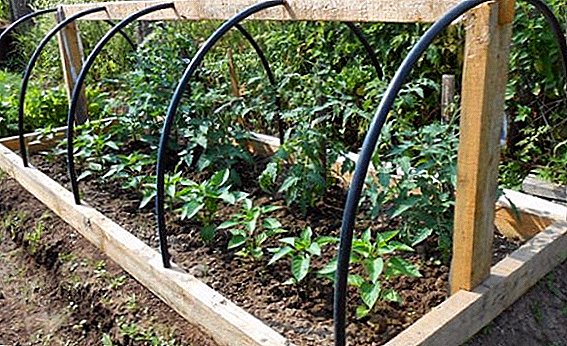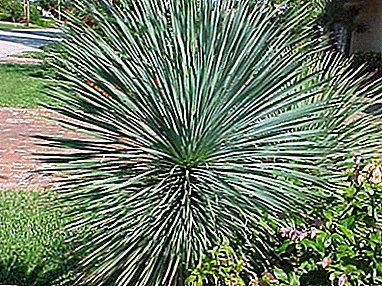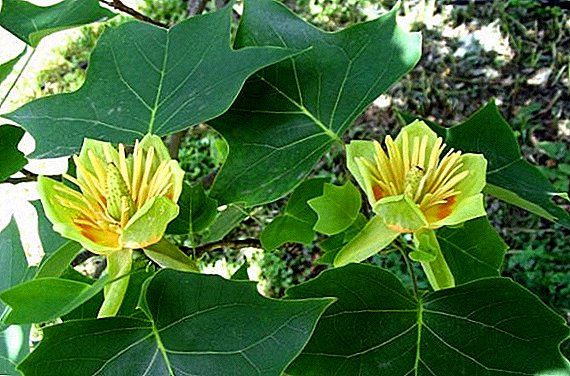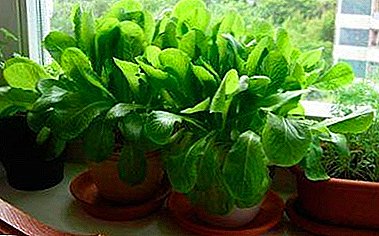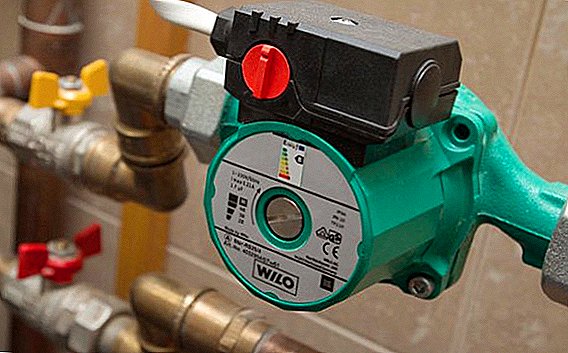 People living in private homes in harsh winters know firsthand how difficult (and sometimes expensive) it is to maintain a constant comfortable temperature in the rooms. A fireplace is, of course, cozy and romantic, and an autonomous heating system is simple and comfortable. To improve its work, masters often advise the installation of additional equipment - a pump. What it is for, and how to put it into the system - we will look at this article.
People living in private homes in harsh winters know firsthand how difficult (and sometimes expensive) it is to maintain a constant comfortable temperature in the rooms. A fireplace is, of course, cozy and romantic, and an autonomous heating system is simple and comfortable. To improve its work, masters often advise the installation of additional equipment - a pump. What it is for, and how to put it into the system - we will look at this article.
The essence of the pump in the heating network
If an autonomous heating system operates in the house, an additional pump is installed to optimize its operation, as well as the ability to regulate it (for example, to change the rate of circulation of the coolant). It allows you to extend the service life of the system, as well as make it more efficient, while saving energy. The essence of the device - acceleration of coolant turnover and ensuring its uniformity, which greatly optimizes the heating of the room.
Did you know? The first water heating system was invented and applied in 1777. It was originally intended for heating incubators, but quickly gained popularity in people's homes.
The circular pump itself is a small device, which is directly inserted into the heating pipe. In small houses, it is a desirable addition, but if the living area is more than 100 square meters, then you cannot do without it. 
Varieties
Depending on whether the parts of the device are in contact with the coolant, its type is determined: the presence of contact is “wet”, the absence is “dry”.
Wet Rotor Pumps
They are usually placed in small rooms, for example, in private houses.
Principle of operation
Parts of the equipment come into contact with the coolant, which plays the role of a kind of lubrication and prolongs the life.
Benefits
There are several reasons to choose it:- it works very quietly, you will not hear it;
- does not require regular maintenance;
- easy to set up and fix;
- consumes little energy;
- small and light.
disadvantages
The efficiency of the equipment does not exceed 50%, so this option is suitable only for small rooms.Read also about the choice of fecal pump for pumping home sewage.
Dry rotor pumps
These devices, in most cases, are used in commercial real estate, in production and in other non-residential premises.
Principle of operation
The mechanism is not in contact with the liquid.
Benefits
The “dry” type is more powerful than the “wet” type, has a higher efficiency, and is suitable for large rooms.disadvantages
When selecting and installing, please note that the device:- very noisy, so it should be installed in a separate room with good sound insulation;
- very big and heavy;
- requires regular maintenance.
Learn how to do the heating in the greenhouse with your own hands.
General selection criteria
When choosing it is important to consider the following sets of parameters:
- Characteristics and conditions of the intended installation site.
- Region (how cold the climate is, annual and daily temperature drops).
- Walls (thickness, building material, the presence of insulation).
- The floor and floors (as far as heat is spent, is there a "warm floor" system).
- Windows (wood or double-glazed windows, how many cameras).
- Floors of the building.
- Characteristics of the heating system.
- Heat carrier (type and temperature).
- Head and system pressure.
- Type and performance of the boiler.
- Required pump capacity.
Calculation of the required power
Capacity in this case is an indicator that indicates how much water a specific model conducts through a pipe per unit of time. Specified in the accompanying documentation. This is one of the important selection criteria that can be decisive for the purchase. To determine whether the power of the device is sufficient for your case, you can use simple calculations.
Indicators you need to know:
- boiler power (indicated on directly on it, or in the accompanying documentation) - N;
- the constant 1.16 is the heat capacity of water;
- inlet-outlet temperature difference (Δt). There are several default values: standard - 20 degrees, 10 degrees for an apartment and 5 - for a warm floor.
Important! The diameter of the pump inlets / outlets must completely coincide with the pipes of the system.
We decide on the pressure of the pump
Pressure is a very important indicator, especially if the equipment is intended for heating a storey building. Network performance depends on it. The pressure parameter is calculated based on how high the pump can raise the coolant. Appropriate marking is on the product itself and is required in the documentation. Specifies the cross section of the pipe and the maximum lift height.  In order to determine the appropriate parameters of the device, it is necessary to calculate the hydraulic resistance of the system that needs to be overcome. To do this, use the formula J = (F + R * L) / p * gwhose values: F - resistance in the joints of the system; R - pipe resistance; L is the length of the pipe (from the pump to the most distant point); p is the density of the fluid circulating in the system (for water this indicator is 1000 kg / m3); g - constant 9.8 m / s2.
In order to determine the appropriate parameters of the device, it is necessary to calculate the hydraulic resistance of the system that needs to be overcome. To do this, use the formula J = (F + R * L) / p * gwhose values: F - resistance in the joints of the system; R - pipe resistance; L is the length of the pipe (from the pump to the most distant point); p is the density of the fluid circulating in the system (for water this indicator is 1000 kg / m3); g - constant 9.8 m / s2.
The formula is very complicated, so you can use a simplified version - measure the length of all horizontal pipes of the system and derive the necessary pressure based on L (total) / 10 * 0.6. In the presence of numerous ramifications, the indicator doubles.
We advise you to read about the choice of a pumping station and a pump for barrel irrigation for the summer house, as well as a device for a hydroponics system.
External factors affecting the operation of the pump
The correct operation of the equipment and its effectiveness is affected following:
- diameter of pipes of the system (the larger the diameter, the greater must be the pump capacity);
- the temperature of the external and internal environments (for example, starting the system after a long break leads to an increased load on the device. In this mode, it will work until the room warms up).

Pump installation technology
The procedure is quite simple. In modern models, many of the limitations characteristic of earlier versions are overcome. However, some features still need to be considered.
The dream of many owners of the cottage or a private house is a decorative waterfall or fountain. The design can be quite small and fit even in a limited area, and you can do it yourself, using a pump, hoses, some materials and aquatic plants.
Purchase of required items
In addition to the pump itself, you will need the following:
- valves;
- detachable adapters;
- check valve;
- filter;
- jumper pipe (bypass);
- set of wrenches of suitable size.

Did you know? In the eighties in the USSR they seriously planned to use atomic energy for the heating of residential buildings. The end of these ambitious plans put the accident at the Chernobyl nuclear power plant.
Selection of the location of the pump
First of all, care should be taken that in the future the device can be easily accessed in case of a malfunction or scheduled maintenance. From the point of view of the balanced load on the system, the optimal place for tie-in is in the supply pipe between the expansion tank and the boiler.
Installation Instructions
Works are performed in the following sequence:
- Drain water and flush pipes. Removal of coolant and contamination will extend the life of the equipment. If we neglect the pre-cleaning the filter will quickly become clogged and the system will fail.
- Insertion device on the bypass. After selecting the appropriate place for tie-in, the pump is installed on the lintel (its diameter should be slightly smaller than the pipes). This will allow repair or adjustment of the device without stopping the circulation.
- Install a check valve.
- The inlet of the coolant into the system is performed simultaneously with the bleeding of air through the central valve, which helps prevent the formation of air plugs.
- The device is connected to the mains through a grounded outlet at the end, after the system has been completed.
Pump - an integral part of the apparatus for milking cows and goats.
General recommendations
In the installation process is to adhere to such recommendations:
- elements are installed in the course of the movement of water in the pipes;
- Wet pumps should be installed only in horizontal orientation;
- terminals should be placed on top;
- As an additional precautionary measure, it is worthwhile to install a pressure gauge to control pressure fluctuations and a valve to release it;
- connections must be sealed.
Important! In no case can not start the pump if the system air. This will lead to serious damage.Thus, installing a pump will significantly increase the efficiency of your heating system, and its proper operation will allow you to maintain a comfortable temperature without any problems. Warm your home!



